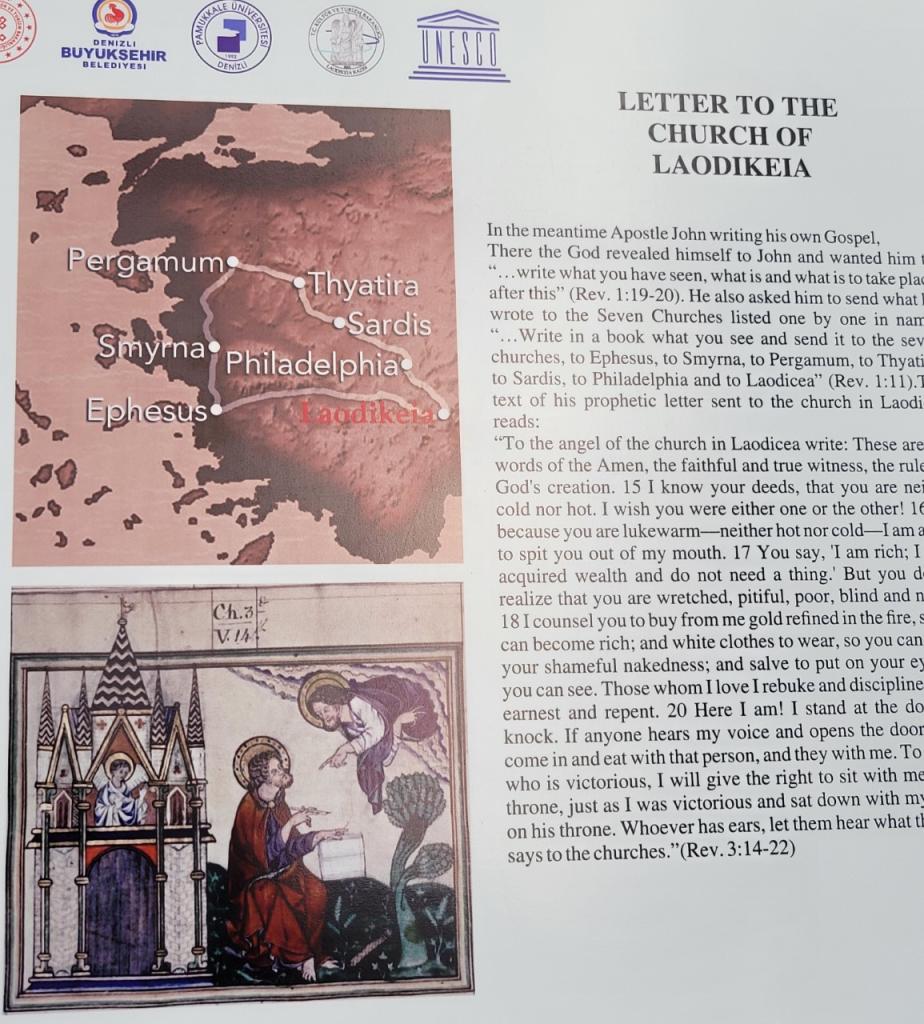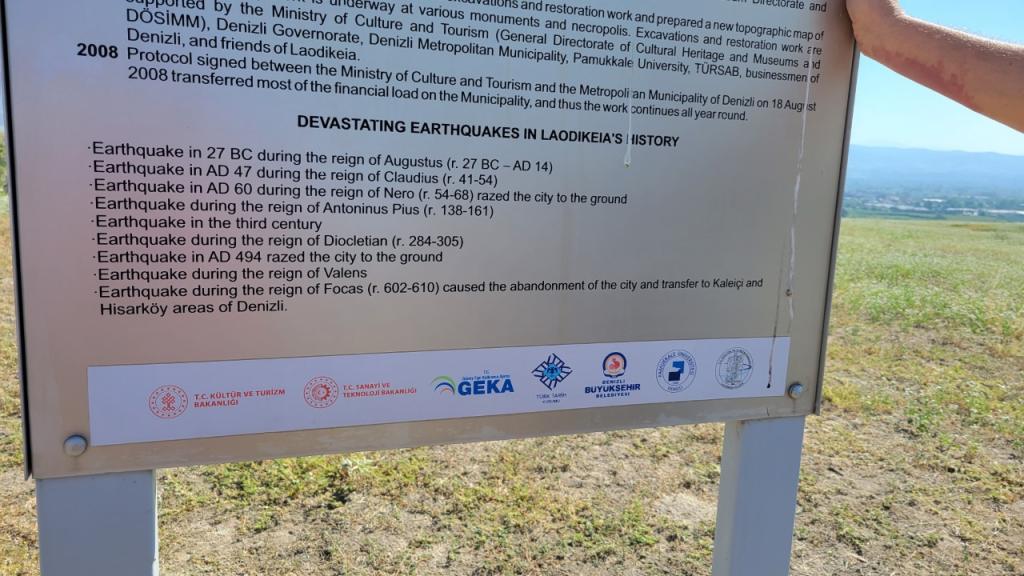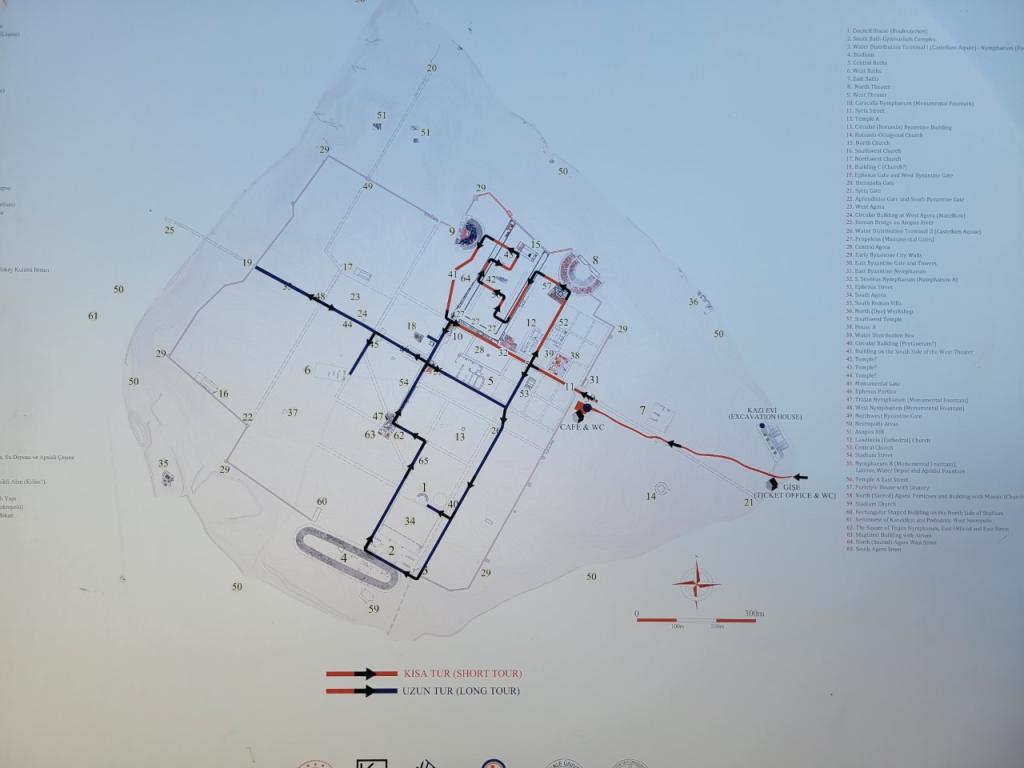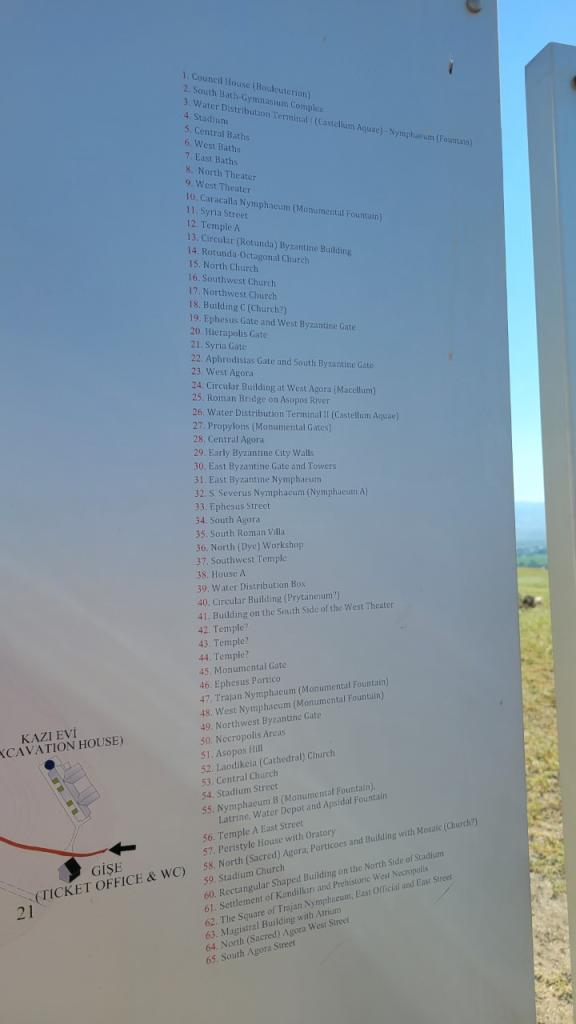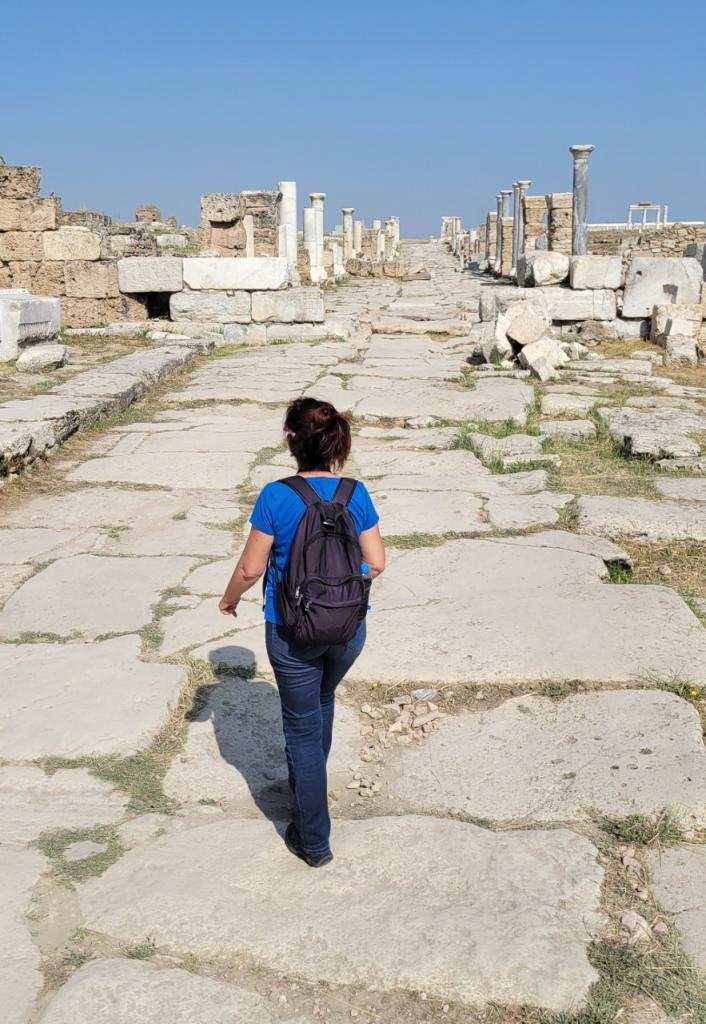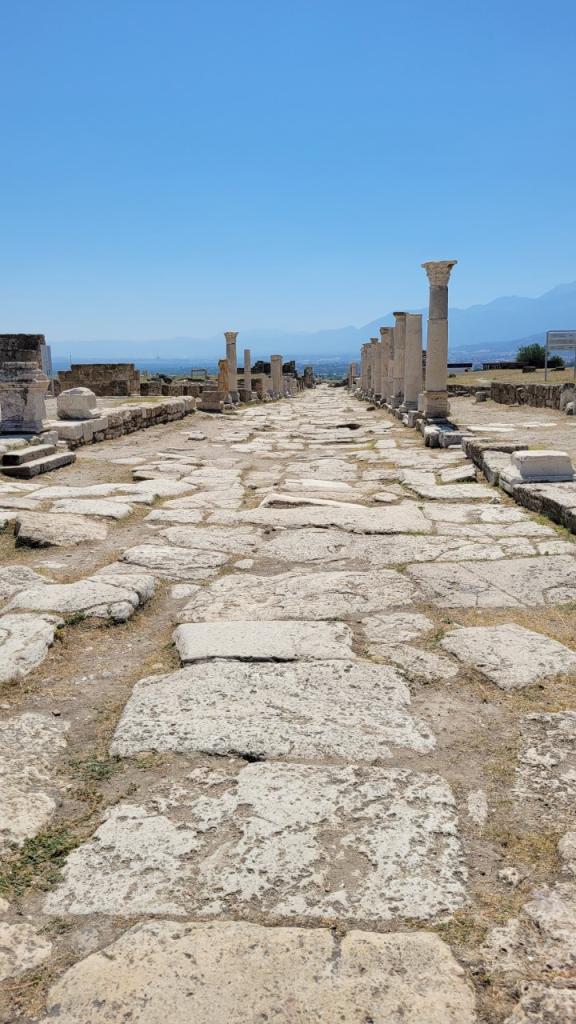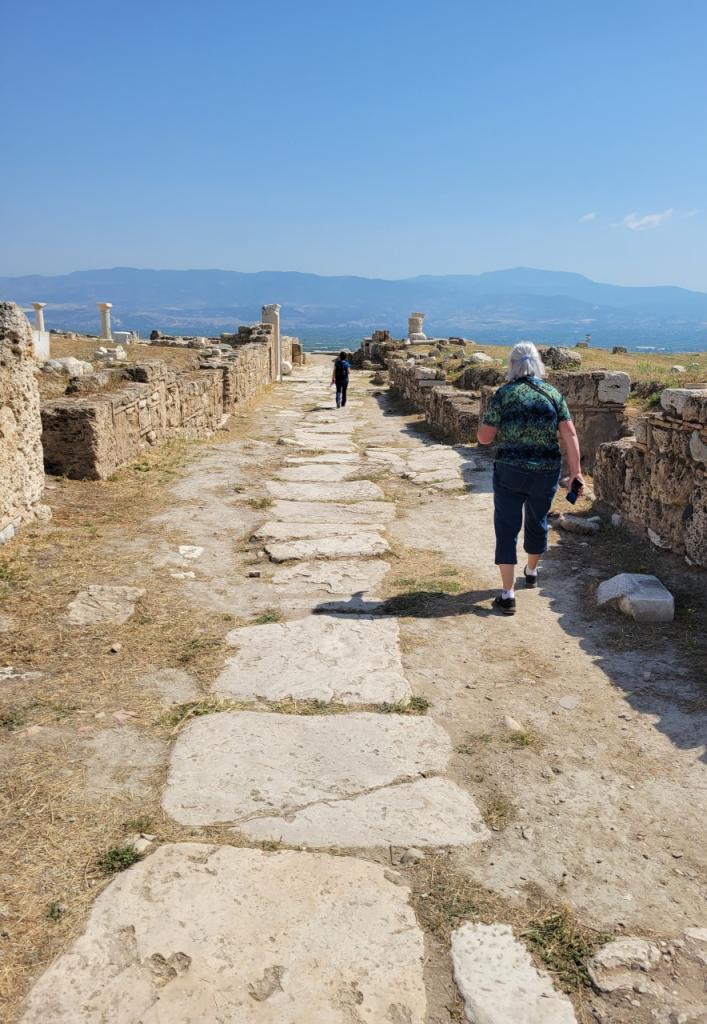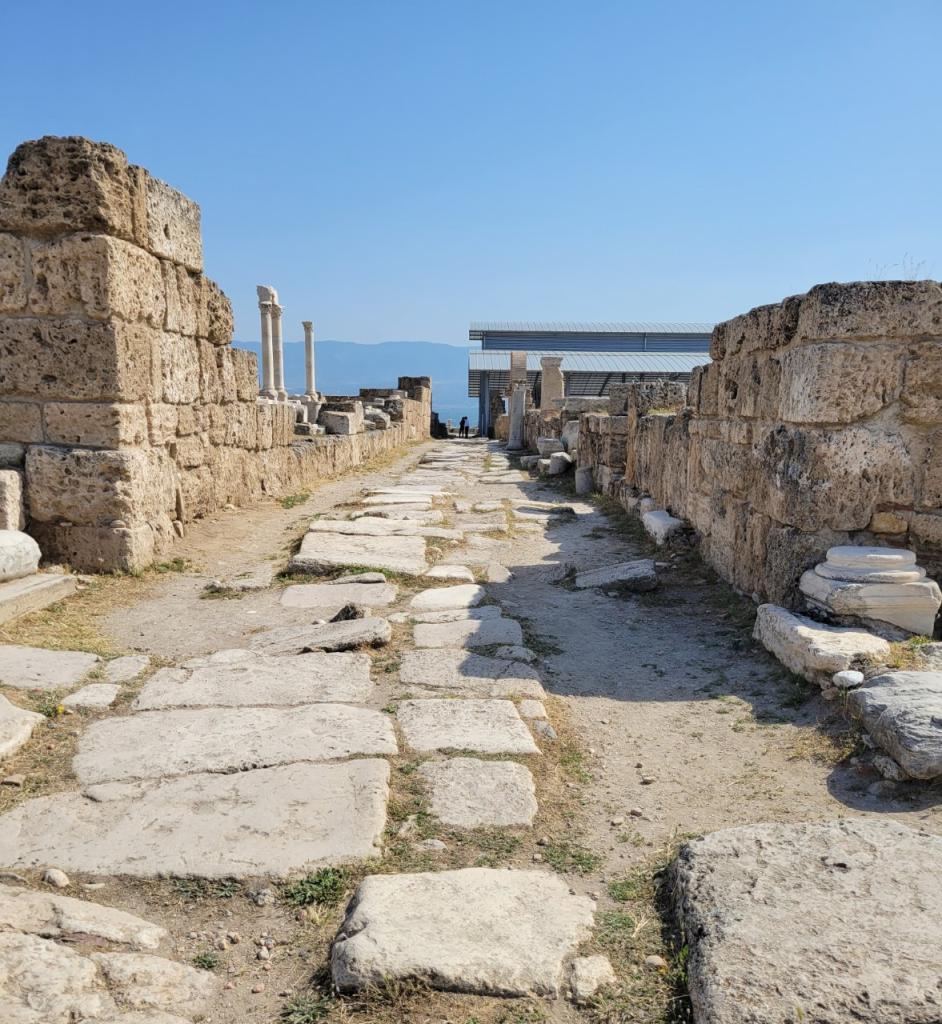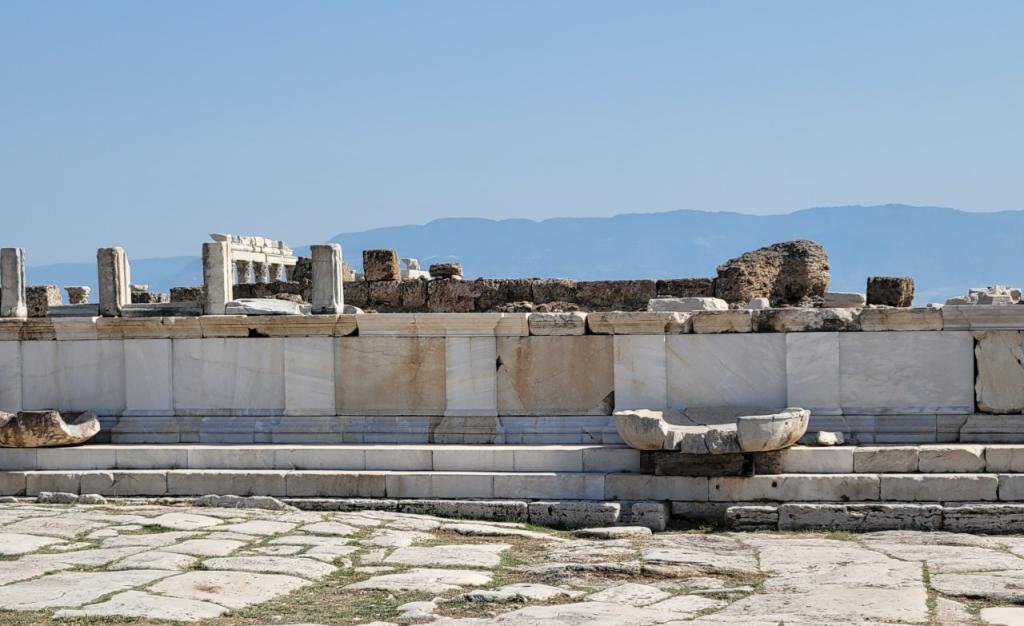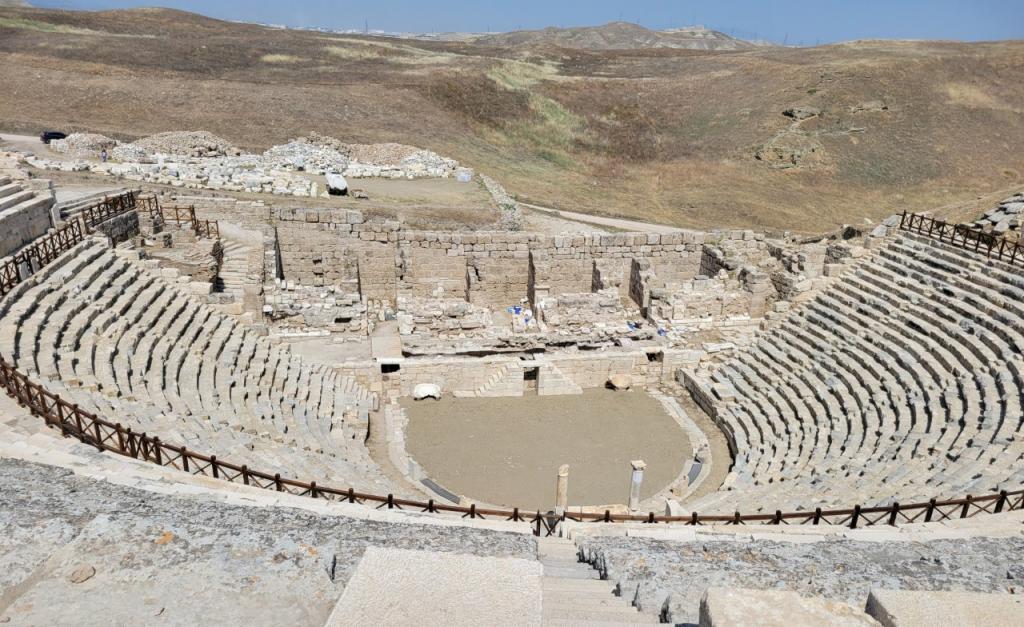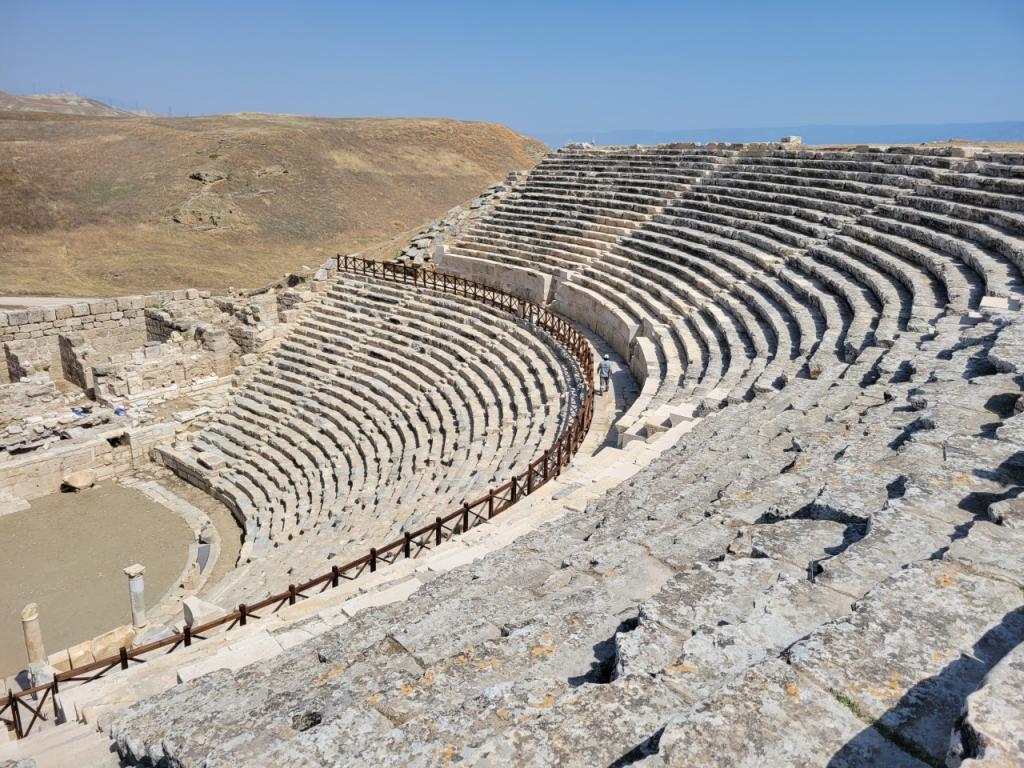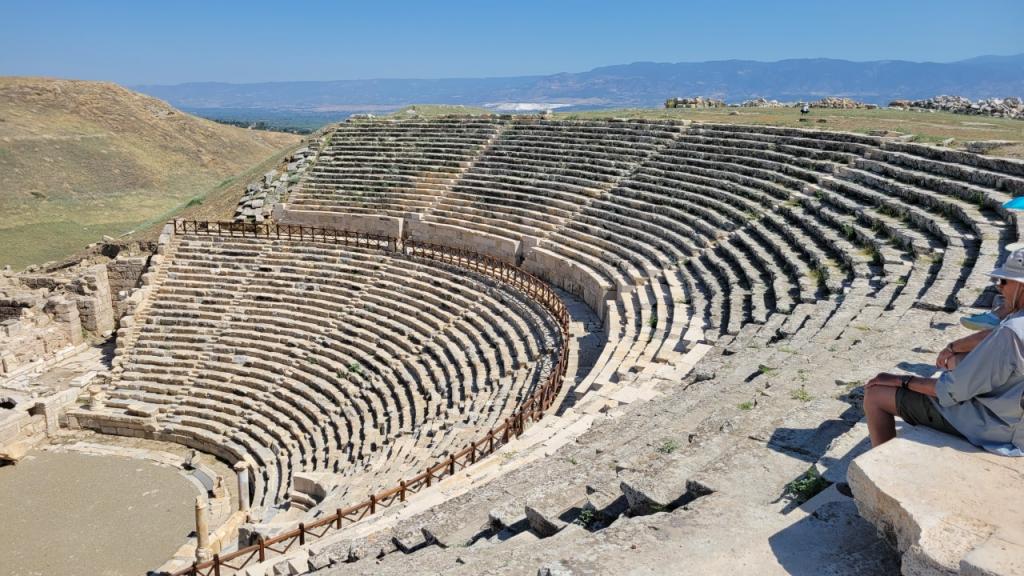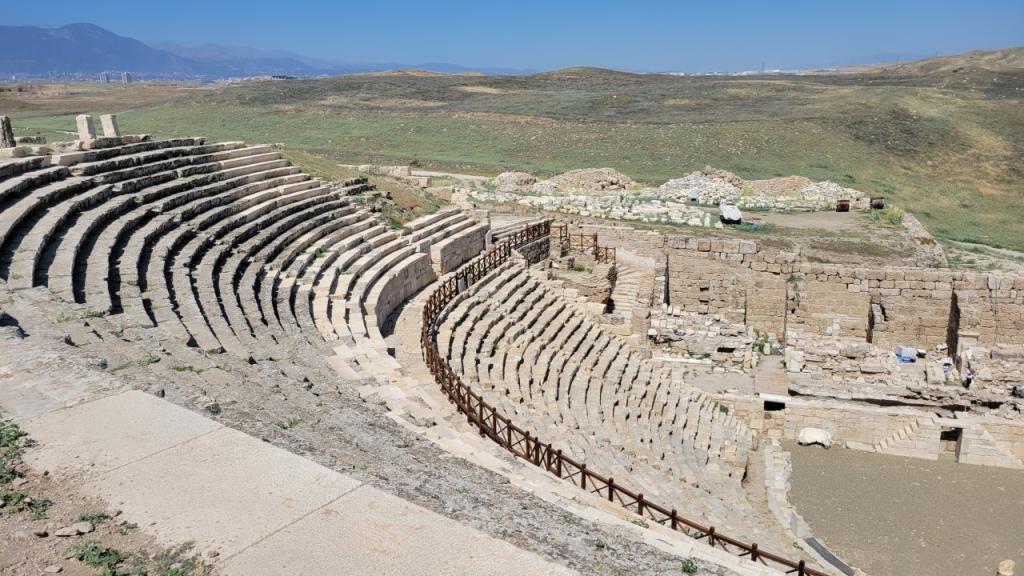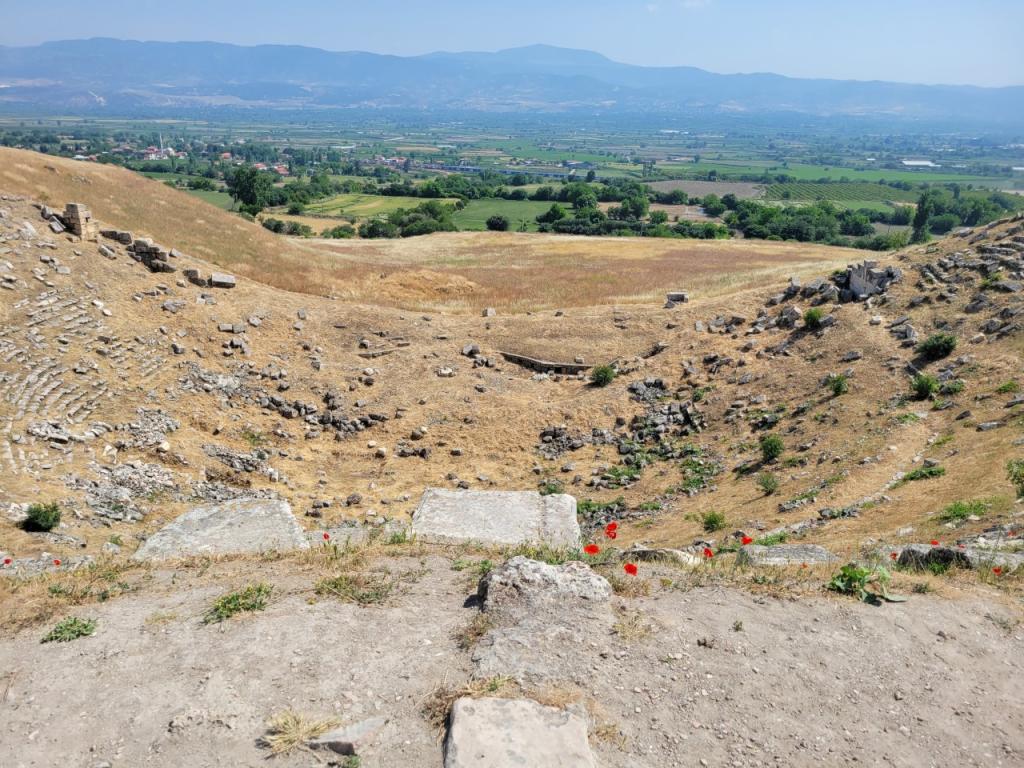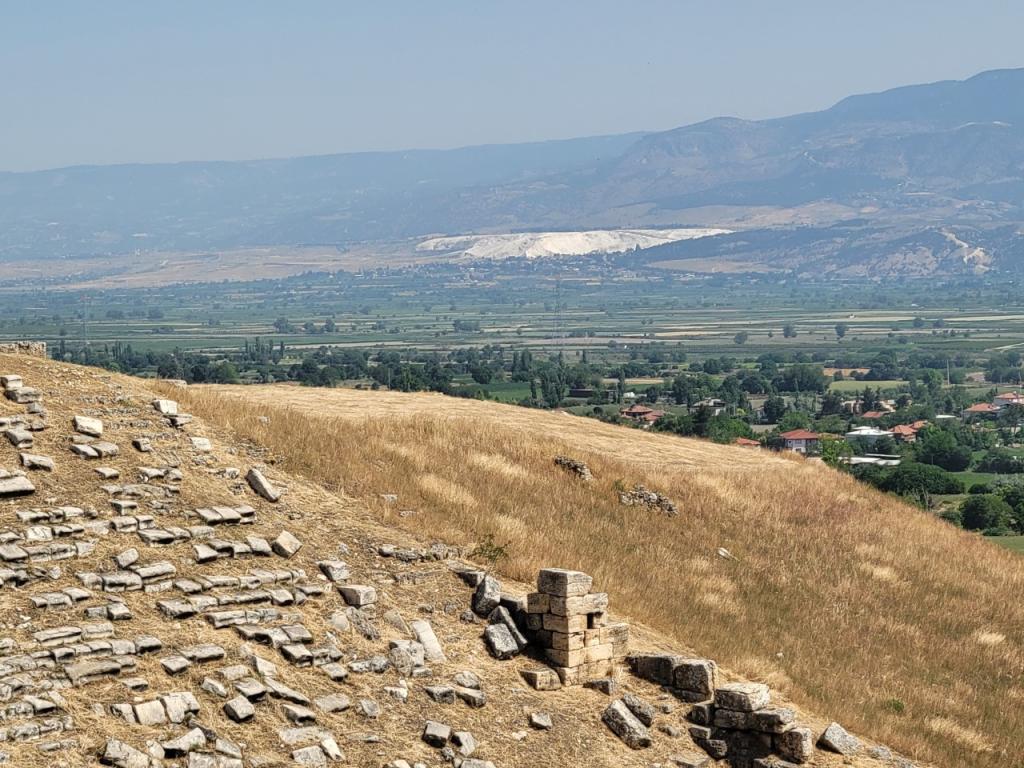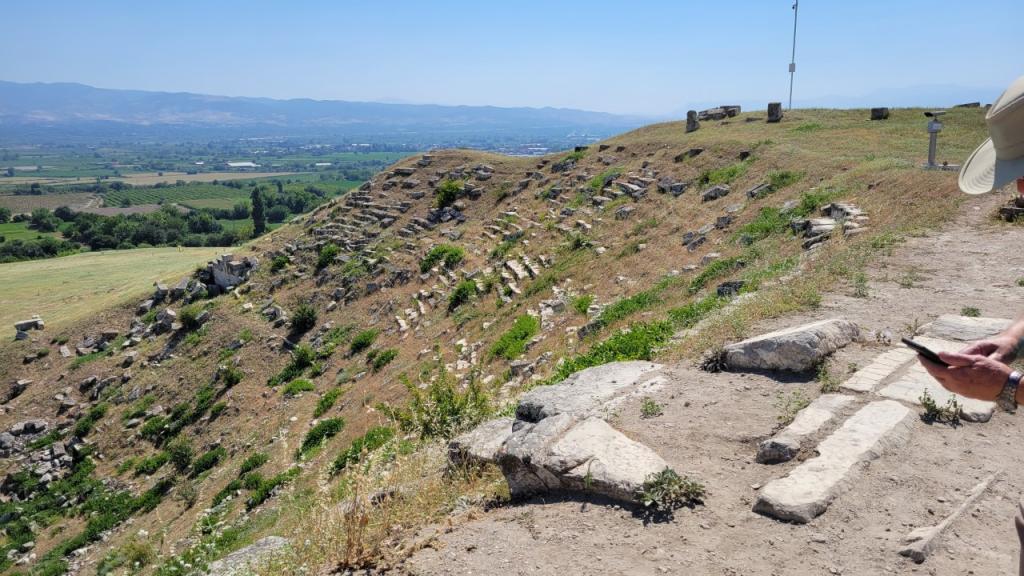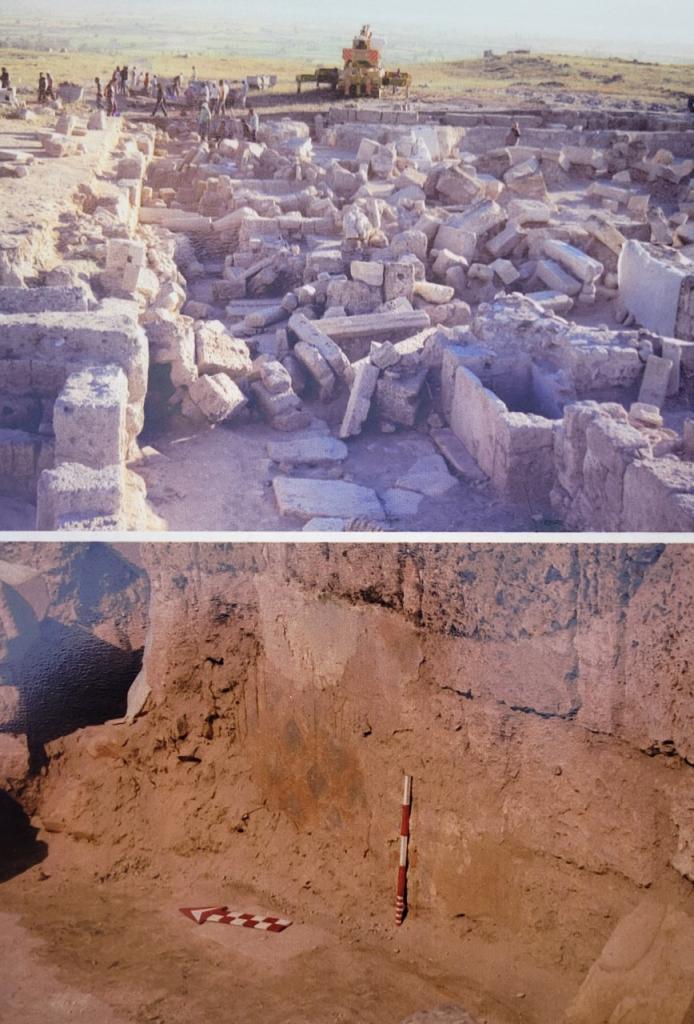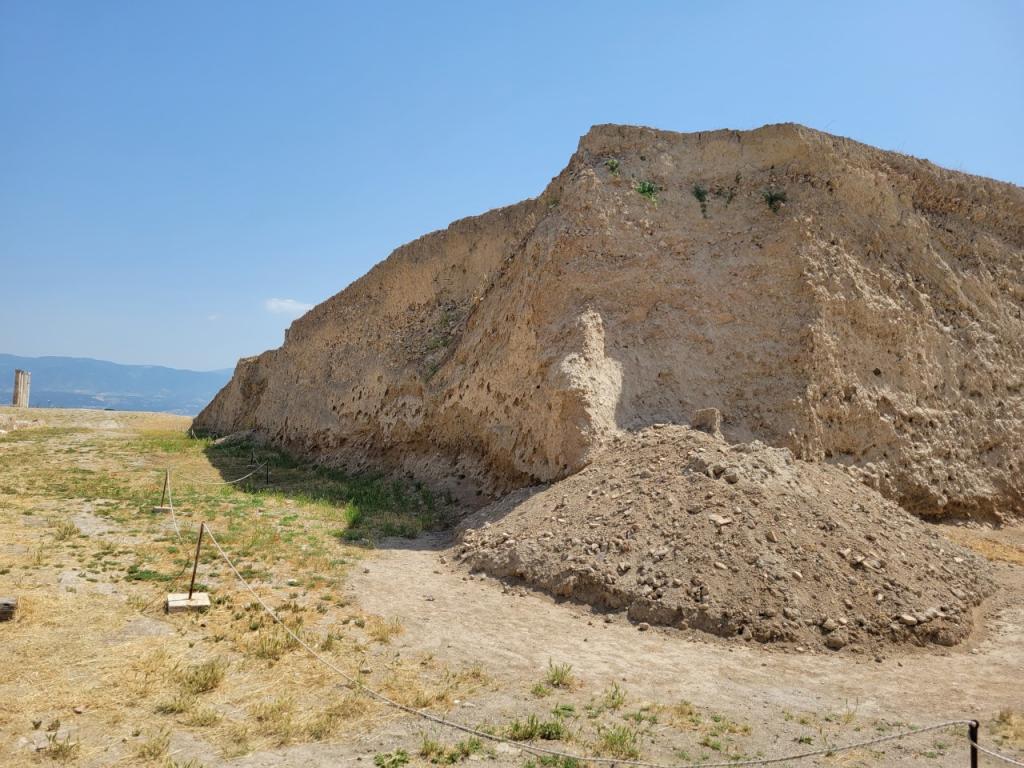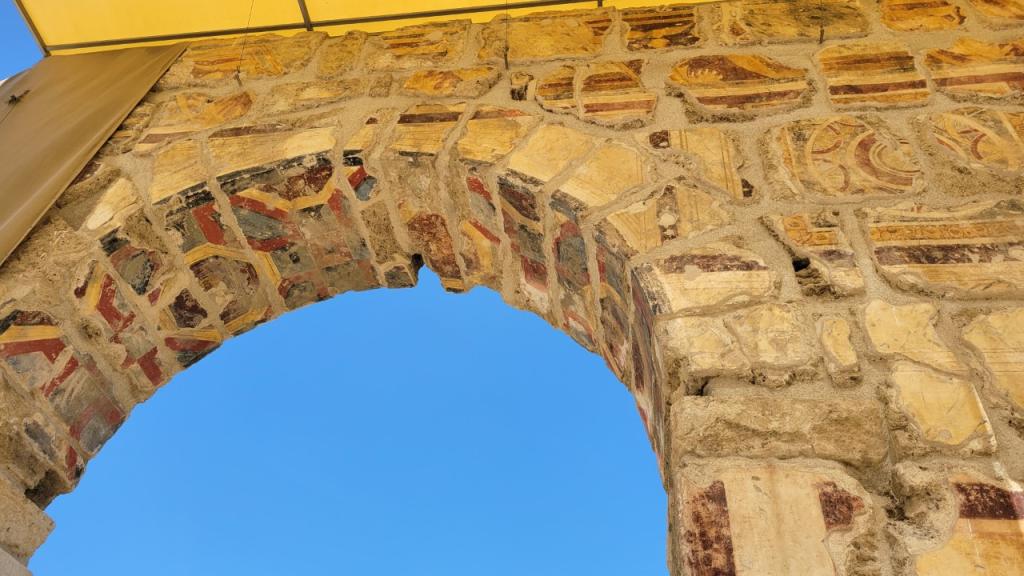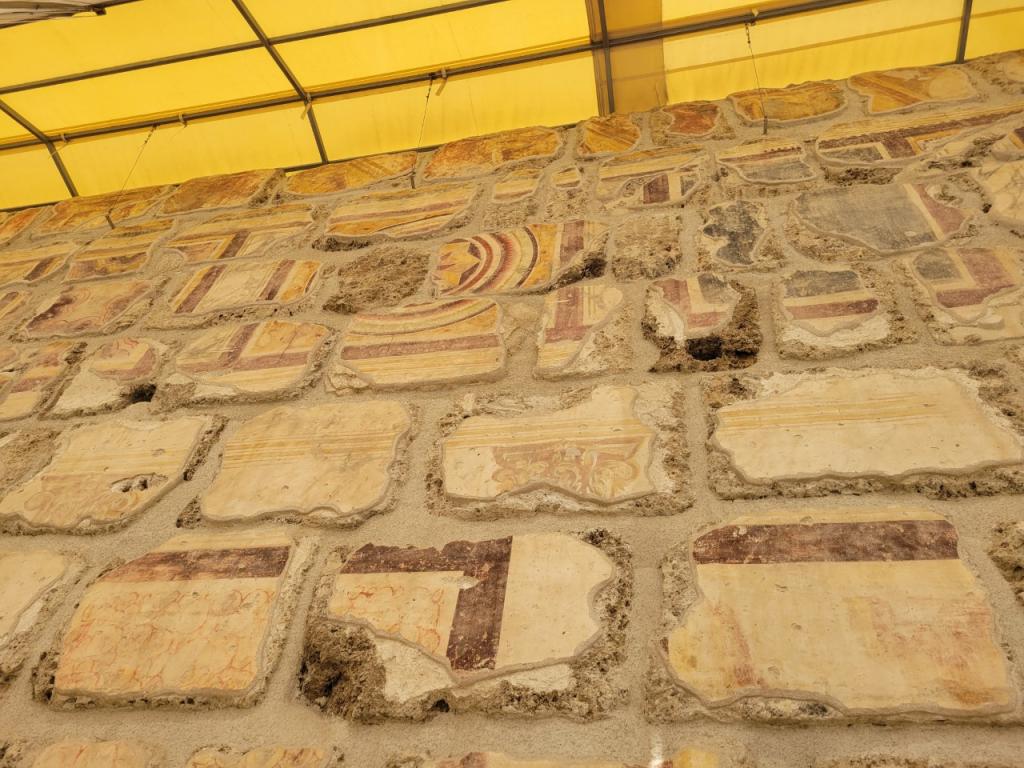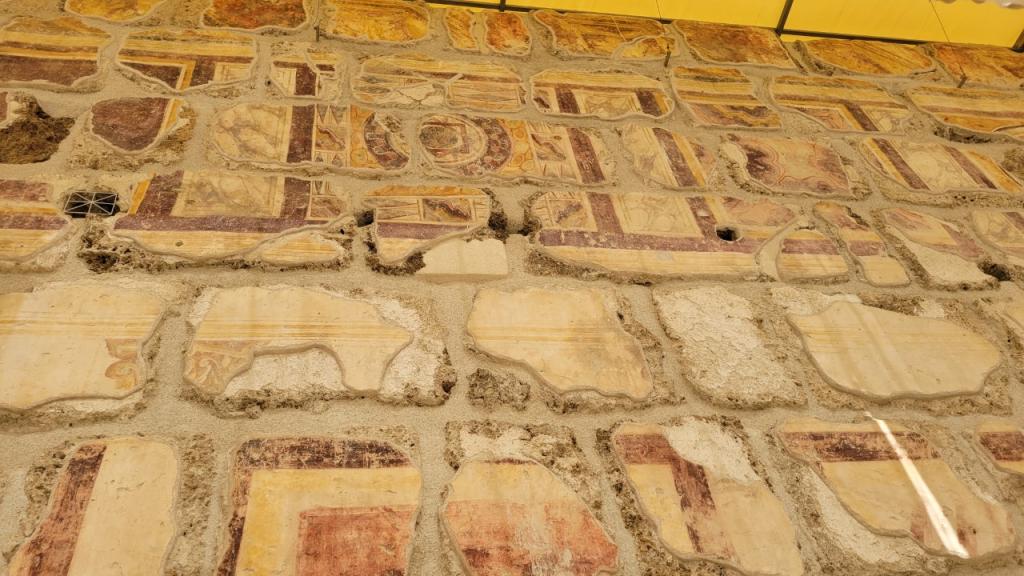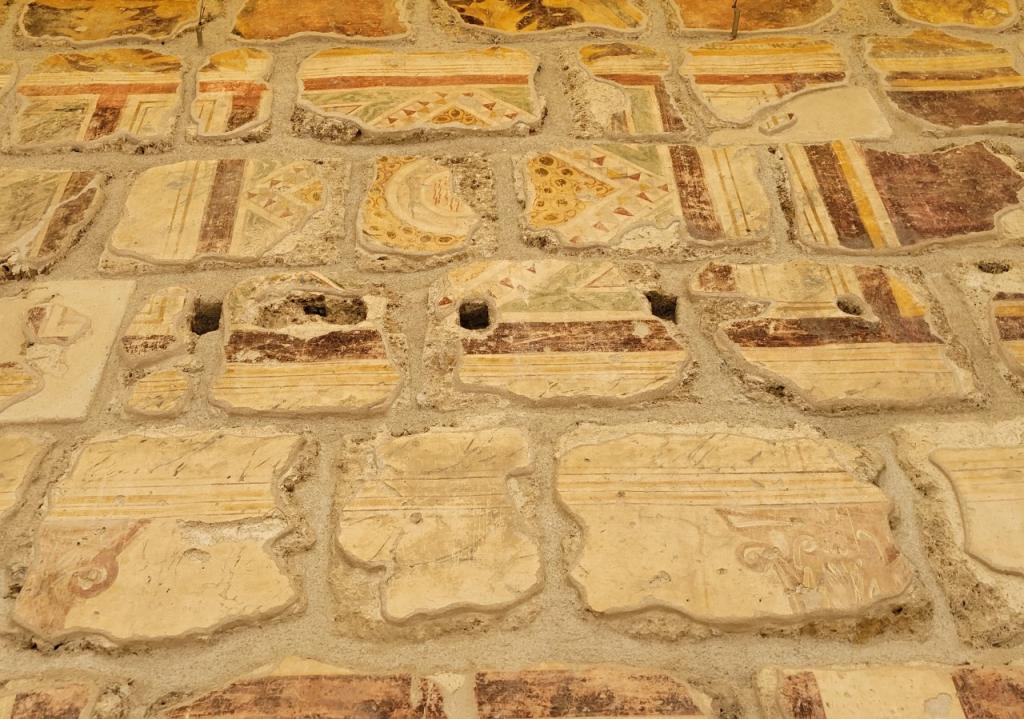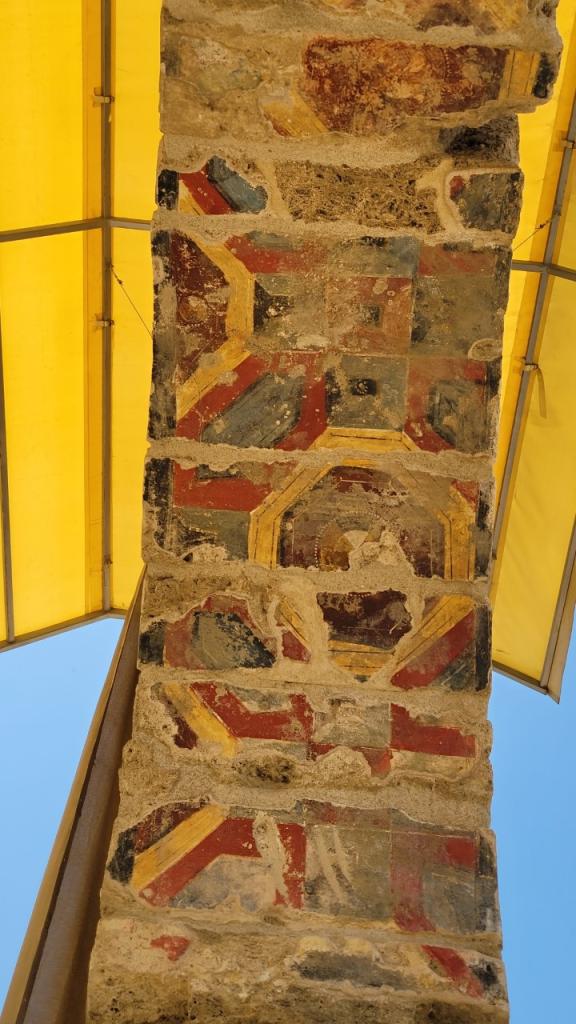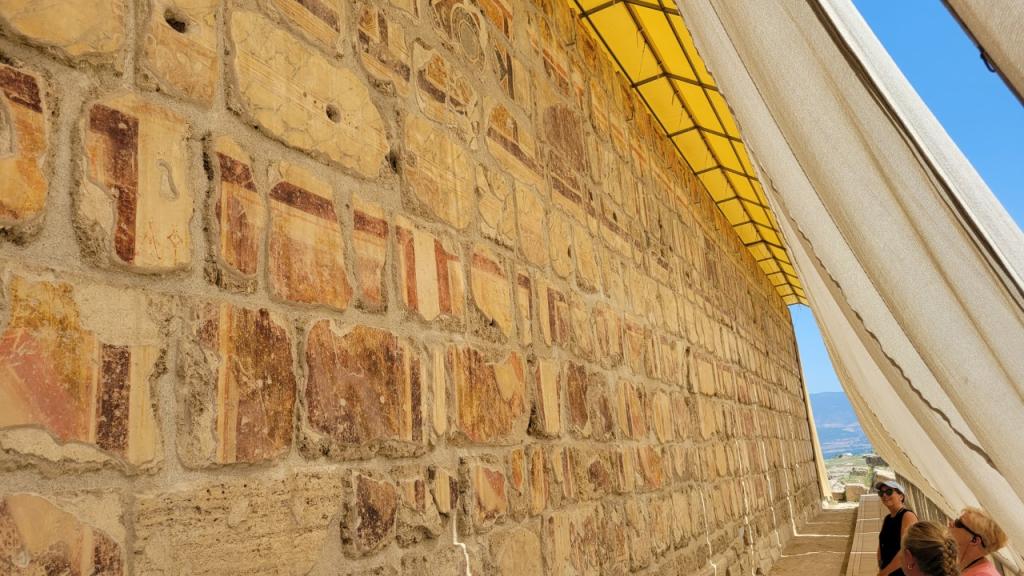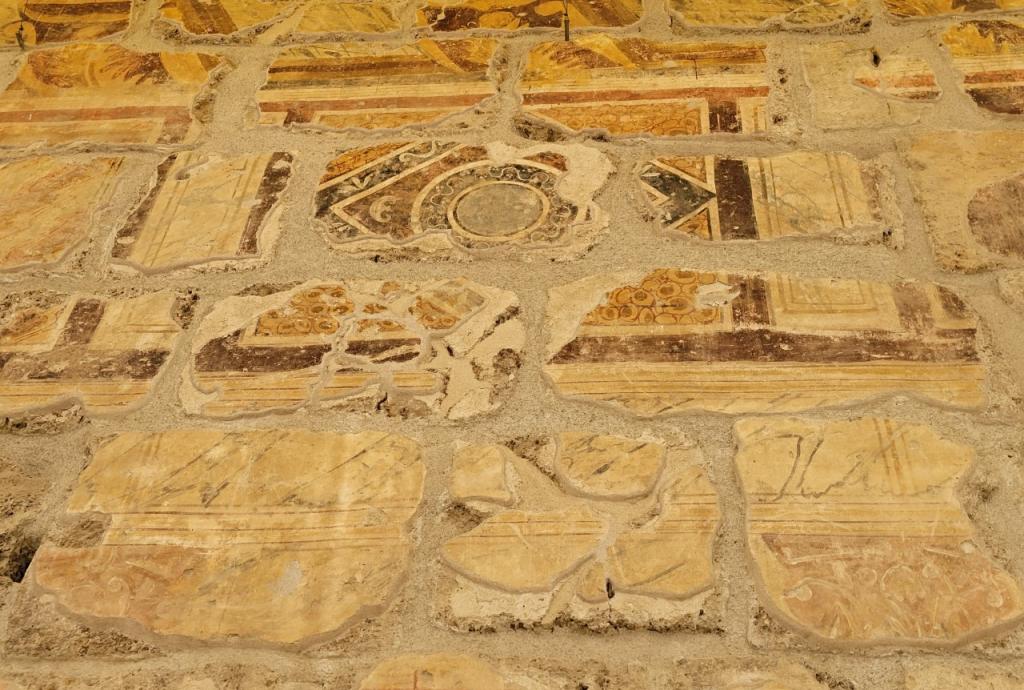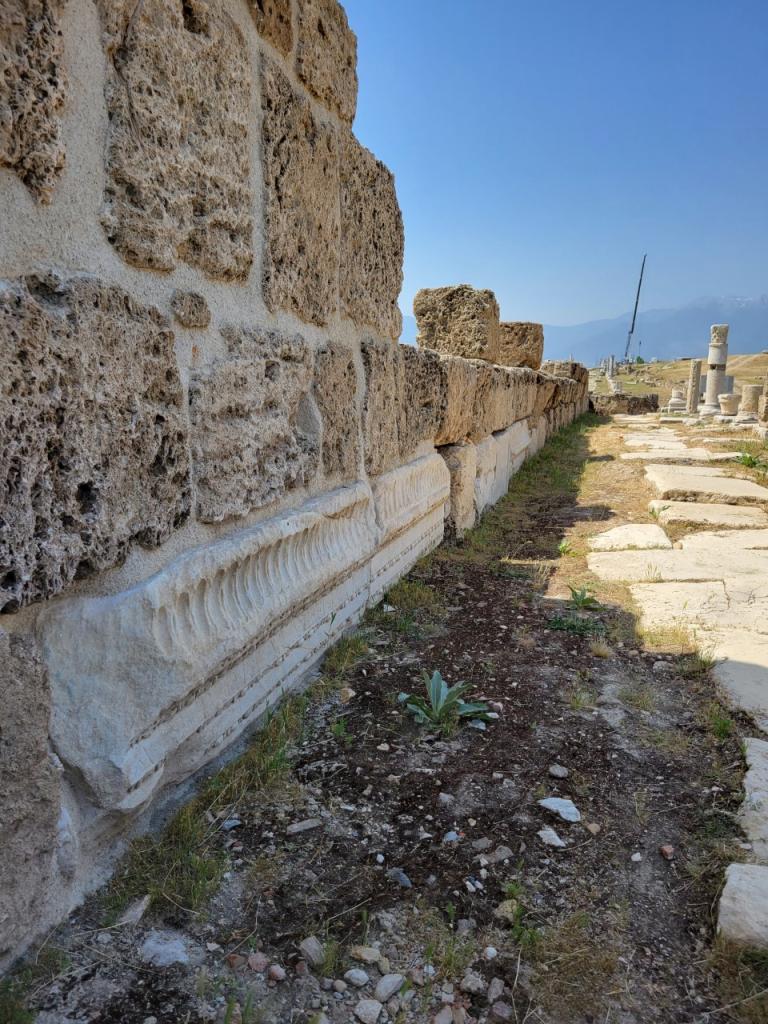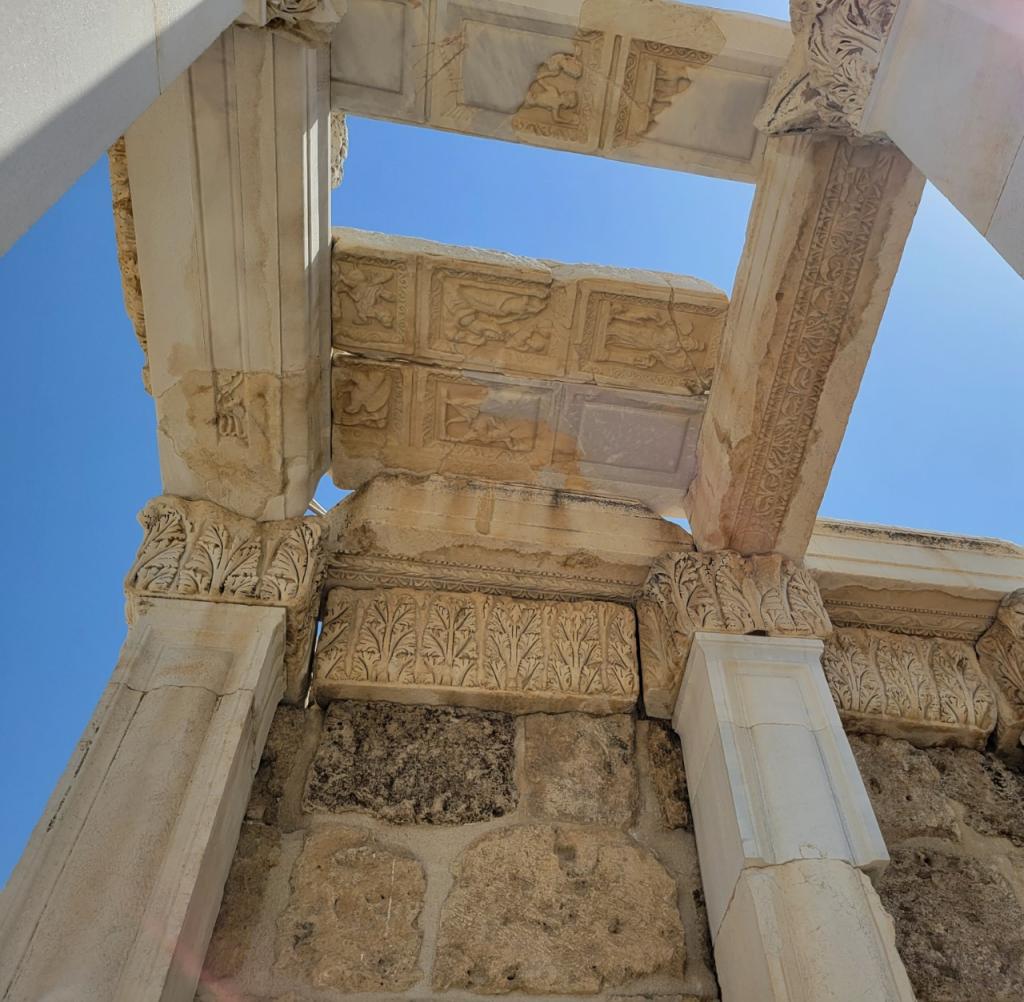Laodicea, as you may remember comes in for some heavy criticism in Revelation….
It was a very large (by ancient standards) prosperous city that had a water problem, namely the water was brackish. Last time I was there they showed me a Brita filter of sorts installed in a villa meant to get out the calcium and other minerals that made the water not very potable. But this was not the only problem for this site— earthquakes devastated this site again and again in early Christian history and yet the church kept growing and building there… as we shall see.
if you are really going to tour this site in the Lycus valley not far from Colossae you’d better put on your walking shoes, as there are some 67 things to see spread out over several miles. This was a town so prosperous they had a morning and an evening theater or stadium, one facing east and one facing west. Here a map, the black line shows how to see it all properly, the red a shorter tour, and the other chart lists the items to see.
There was a major east west street connected to the major east west Roman road that headed to Syria in one direction and Ephesus in the other. We are very fortunate that the archaeologist who lives in nearby Denizli who heads up the considerably ongoing dig here, wanted to show the city in various of its period of existence, including in the Byzantine period, so we have various house churches and basilicas being brought back into view here and the results are impressive. His name is Celal Shimshek, and kudos to him for his major life work here. Let’s start with the streets themselves which are wide and impressive….
The huge limestone slabs are still there, though a bit worn down— as for our roads, they wouldn’t last one one-thousandth as well as theirs did…
Laodicea is built on a plateau surrounded by hills out of which the theaters have been carved. And in the distance across the Lycus valley you can see Hierapolis or modern day Pamukkale with its white limestone cliffs over which water still pours. Hierapolis was the spa town of the area with its hot springs, and still is today.
Here are the two theaters, one mostly restored and even used today, and one not so much…
The usual math is count the number of seats and multiply by ten in which case we are talking about at least 50,000 or more residents when this theater was built, which by ancient standards was a large city. The other one looks like this…
Here’s what they find when stuff is first unearthed in some cases..
Then they have to figure what the original design was….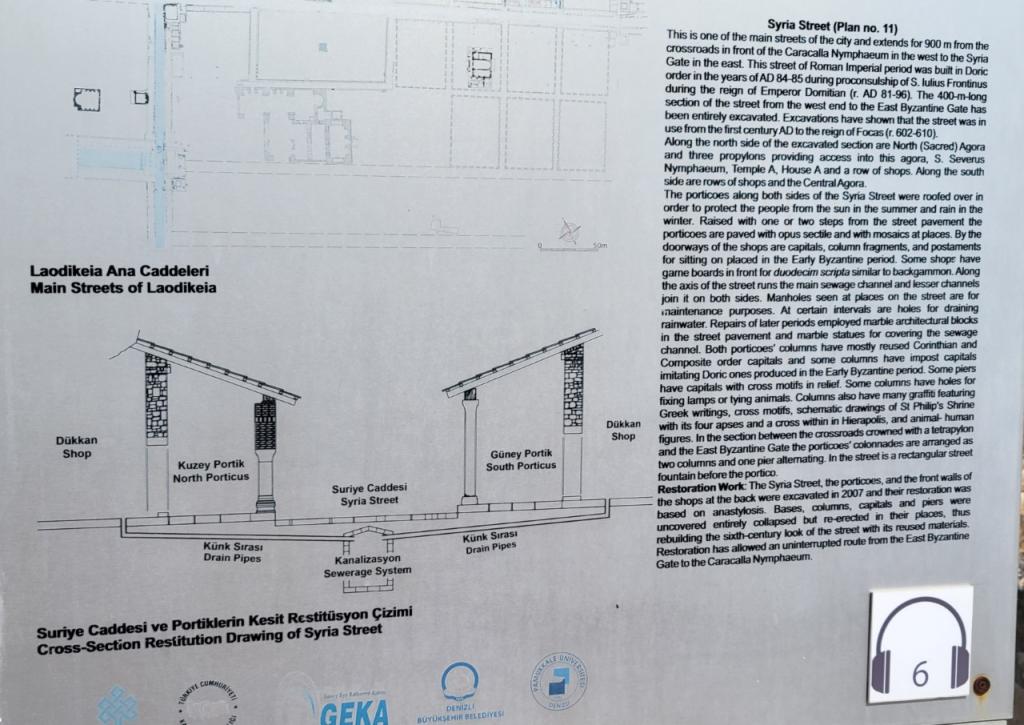
It takes a lot of work to put the pieces back together in such a theater. I want to move on to my favorite new part of the dig which has uncovered the agora or market place and it’s impressive walled structure… This first shot shows a pile of dirt and how much dirt had to be removed in order to uncover this agora.
But of course because this large structure was buried, the color of it was preserved, which today requires a canopy to accomplish the same aim.
The back side of the wall doesn’t have the same sort of decorative colors..
The colorful arch above can be compared to a very different sort of decorative arch…
In our next post we will look at the beginnings of Christian construction in this town…


